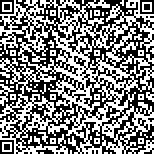| A new buoyancy salinometer suitable for field and laboratory uses has been designed and made in 1995. This instrument is characterized by low cost, simple construction and high reliability. Its main advantages include simple operation and fast determination; no power source, chemical agent and standard correction before determination are needed Its accuracy of measurement is Immune to the interference by suspended material and seawater constituent variations. This method is accurate to 0.02, the same as that of the Kundsen method. The present experiment shows that the salinity derived using the salinometer is correct with the seawater temperature ranging from 0 to 35°C. The buoyancy salinometer can be applied to the monitoring of surface seawater salinity in nearshore, estuarine and mariculture areas.
1 Principle and apparatus
The principle of buoyancy salinometer is based upon the interrelationships between buoyancy, density and salinity. For a buoyancy meter with given volume and weight, the buoyancy is related to the density of seawater which is influenced by the seawater temperature and salinity. If the temperature is known, the salinity can be determined.
The buoyancy salinometer consists of a buoyancy meter, a centigrade thermometer, a slide salinity ruler, a ruler for correcting the temperature effect, a sampling volumeter and a safeguarding device for the buoyancy meter.
Three salinity rulers can be used for the salinity ranges of 0-16, 16-32, and 32-48, respectively. These are matched by three rulers for uses with temperature of 0-35°C.
2 Calibration
The water level line is applied to calibrate the basic position for the temperature ruler.
3 The working curve
The working curve of the buoyancy salinometer (Fig.1) shows that the buoyancy salinometer has a satisfactory responsibility for a salinity range of 0-48.
4 Precision and accuracy
The precision and accuracy were determined by Beihai Brach of the State Standard Measure Center. The data shown in Tables 1 and 2 are satisfactory for salinity measurements using the buoyancy salinometer. |
